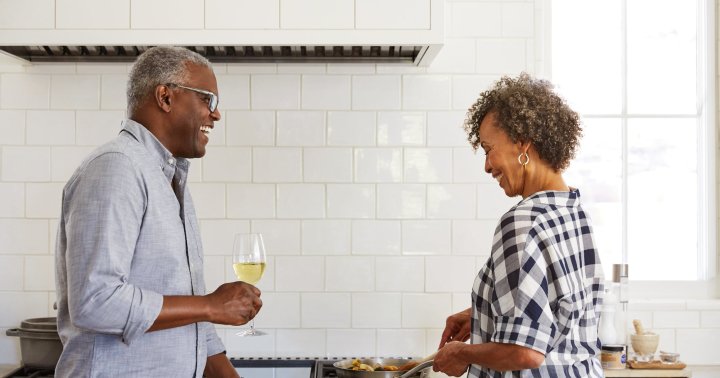I'm A Couples Therapist & Successful Relationships Have These 4 Things In Common
"The relationship you want is not something you get simply by choosing the right partner, putting a ring on your beloved’s finger, and scheduling a caterer. Love in successful relationships is built in each moment."

It's 8 a.m.: Molly is in the kitchen making coffee. Jack wanders in. Molly asks him how he slept. Not well; he’s worried about a meeting he has today. Molly asks him if there is anything she can do to help.
Cut to 9:15 a.m.: Jack is on a break between meetings. He goes to look for Molly and finds her in the family room. She looks up from her computer. “Any news from your sister?” he asks. Molly’s sister is pregnant and due to deliver any day now.
Jack and Molly have started their day signaling each other of their ongoing awareness of each other and their willingness and ability to care about each other’s needs, desires, and wellbeing.
What love looks like in successful relationships.
Love, in successful relationships, is people creating for each other a sense of being safe, cared about, trusted, and trusting. These are the essential qualities of the openness that allows us to relax and contribute our best to each other–the best of our listening, patience, generosity, courage, and even creative problem solving.
Everything we want and need from each other flows, or fails to flow, through the open channel we create day by day, moment by moment. And the very good news is that in every unfolding moment we have the next opportunity for creating this kind of love.
The typical romantic story of love is the story of finding that special someone. At the end, the two people ride off into the sunset. But that is just the beginning. The relationship you want is not something you get simply by choosing the right partner, putting a ring on your beloved’s finger, and scheduling a caterer. Love in successful relationships is built in each moment.
When the surf’s up, you grab your boards and go have a good time, laughing at all the times you fall off.
No surf? You sit on the beach remembering together the great times you’ve had. Or take the opportunity to find out what each of you wants for the future.
Storm? Maybe caused by external conditions, like a pandemic, or internal conditions, when one of you is upset, cranky, blue. You find a quiet place. Make sure you’re safe. Help each other get comfortable. Then you try to figure out together what the injuries are, how to repair them, what you can you learn from this storm, and how you can minimize future storms.
Let’s look at how you build this kind of love.
1. It starts with an inspiring vision.
The fact is that in order to do all of the hard work and hanging in there that love requires, we need more than perspiration—we need inspiration.
Each of us holds inside of us a vision of the relationship we really want. We are perhaps most aware of this vision when we fall in love or decide to get married. Too often, as we encounter the difficulties of relationships, and the gap between our experience and what we’d hoped for, we give up on our dreams. We decide that what we want is naïve, unrealistic. We decide to settle.
But without the inspiration of the vision, the demanding work of being in a relationship is too hard to sustain without exhaustion and resentment. You can’t do it by aiming for something merely acceptable, something less than what you really want.
What’s missing here is the understanding that your dream is a vision of what you will be learning to do. Never underestimate the power of yet, as in,“She doesn’t understand me, yet,” or “We don’t know how to talk about difficult things, yet.”
2. You become learning partners.
Loving well is a lifetime learning project. Our expectation that we should already know how to love well, or that it should be easy, gets in the way. In these times of instant gratification, we sometimes have trouble with anything that is more than a click away.
Couples often ask me, “Can people really change?” This is the burning question because relationships confront us with the ways that we could be better at loving. As we struggle to love well, and be loved well, we see what’s in the way. Relationships tend to show us the need for change and learning. They also provide the powerful elements of commitment and collaboration that help us learn to love.
Participate well in each other’s learning–become learning partners. This ability is a major factor in the quality and durability of relationships.
3. You spend time together.
The idea of “quality time” can lead to the misconception that quantity can be replaced by quality. Yes, we need the quality of our time together to be good, but there is no replacement for the quantity of time that relationships need and thrive on. Spend time having fun, staying current with each other’s lives, and changes, and dreams.
Spend time talking and thinking together about the relationship. Some of your talk about the relationship will be about solving problems, addressing frustrations, and repairing damages. But don’t wait for something to get broken. Explore the relationship in heart-to-heart dialogue. You may return to the kind of talk that is often a part of courtship–long hours spent pleasurably learning about each other.
4. You emphasize the positive.
Create a positive context for the hard conversations. Research by psychologist and renowned marriage researcher John Gottman, Ph.D., tells us that in successful relationships, five out of six interactions are positive. In this way, you create an experience for each other of ease, safety, enjoyment. And when you need to deal with difficulties, your partner will have a much easier time listening to you if their overall experience is that they are safe and loved.
Remember Molly and Jack who did such a great job of starting their morning? Here’s what happened later that day.
Love in successful relationships does not mean that you never make mistakes. It does mean that when mistakes are made, when you’re struggling with anger and hurt, you find your way back to each other, repair the damage, and participate in each other’s learning. You can do this when you’ve built openness and positive expectations moment by moment, as you signal each other of the ongoing connection, interest, and safety that you are offering.
Create an environment where the good times are celebrated, joy is nurtured, pain and difficulty are met with learning, risks are valued, mistakes repaired. This is love in successful relationships.

 Troov
Troov 































